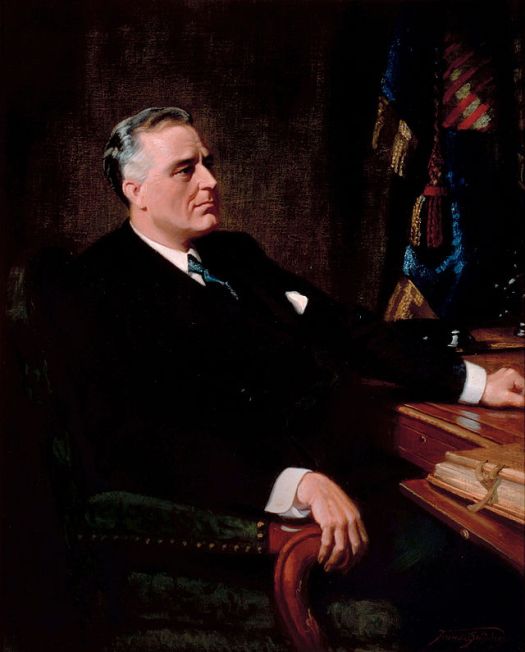In his March 1933 inaugural he had a splendid line: ‘Let me assert my firm belief that the only thing we have to fear is fear itself.’
The real recovery of the boom atmosphere of the 1920s came only on the Monday after the Labor Day weekend of September 1939, when news of the war in Europe plunged the New York Stock Exchange into a joyful confusion which finally wiped out the traces (though not the memory) of October 1929. Two years later, with America on the brink of war itself, the dollar value of production finally passed the 1929 levels for good.
Andrew Mellon (rival of FDR) has amassed a great art collection, which he bequeathed to the nation, founding and endowing the National Gallery of Art in Washington (1937).
The Pilgrim Fathers sought to erect a ‘City on a Hill’ to serve as an example to the Old World.
On July 26, 1941, FDR was informed that Japanese forces had pushed into the French colony of Indochina. He reacted by freezing all Japanese assets in America, which effectively barred Japan from receiving US oil supplies. Colonel Iwakuro, a logistics expert, reported the following differentials in American and Japanese production: steel twenty to one, oil a hundred to one, coal ten to one, aircraft production five to one, shipping two to one, labor force five to one, overall ten to one.
By the end of America’s first year in the war, it had raised its arms production to the total of all three enemy powers put together, and by 1944 had doubled it.
The war acted as an immense bull market. Americans reduced what had been regarded as a three-month repair job on the carrier Yorktown to forty-eight hours. The construction program for the new defense coordinating center, the Pentagon, was cut from seven years to fourteen months.
Henry J. Kaiser had erected the Permanente cement plant, then the world’s biggest. He made the Western USA the principal supplier of mass-produced weaponry and advanced technology.
The need for hustle on a prodigious scale also served to put back on his pedestal the American capitalist folk-hero. Henry Kaiser and his colleagues Henry Morrison and John McCone, fellow-creators of the great dams, having built the largest cement plant in the world, they followed it with the first integrated steel mill. The New Deal earth-movers became the creators of the ‘Arsenal of Democracy.’ The original Six Company group brought together by Kaiser entered into a partnership with Todd Shipbuilding, and set up new shipyards in Los Angeles, Houston, and Portland, Oregon. The first ‘Liberty Ship’ they built took 196 days to deliver. Kaiser cut the time to twenty-seven days and by 1943 he was turning one out every 10.3 hours. Over 52 percent of the ships came from Pacific yards which had not existed before the war. Other big companies quickly adopted the hustle-style. General Electric, in 1942 alone, raised its production of marine turbines from $1 million worth to $300 million. The Japanese Emperor Hirohito asked his Naval Chief of Staff, Admiral Nagano: ‘Why is it that it takes the Americans only a few days to build an airbase and the Japanese more than a month?’ The answer was that the Americans had a vast array of bulldozers and earth-moving equipment, the Japanese little more than muscle-power.

